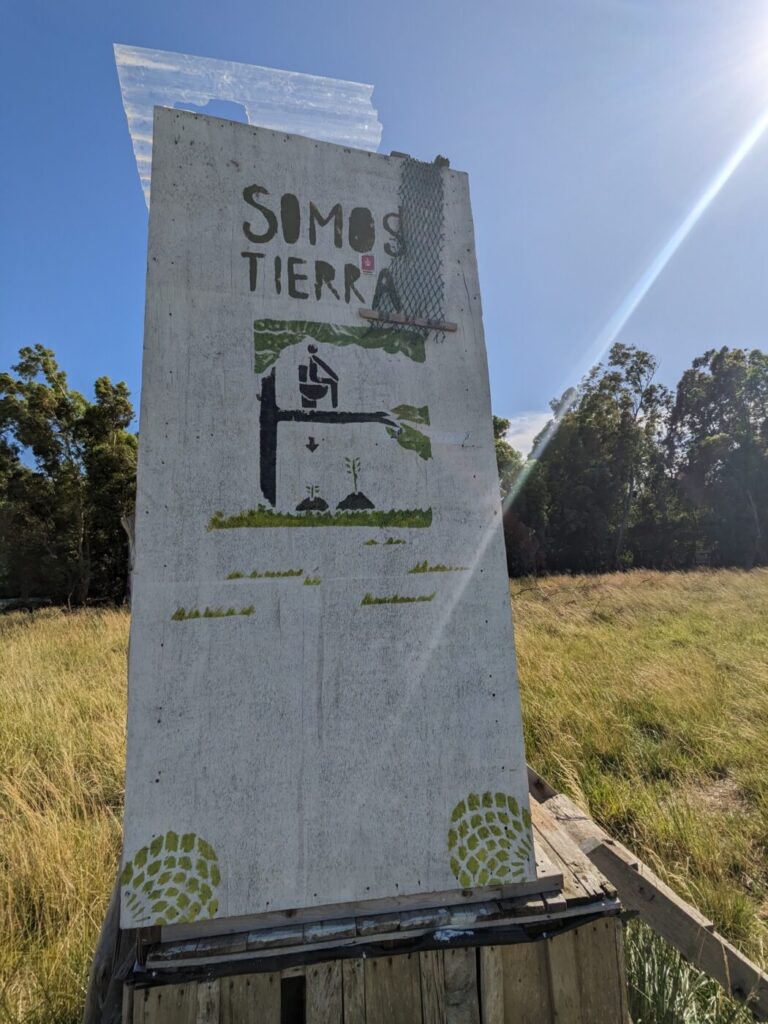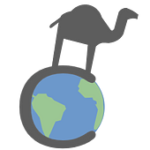What If There’s No Trash Can? A Reflection

Principle #6 in permaculture is “Produce no waste.” We saw this (imperfectly) lived out at an Argentine project.
“Hey Pablo? Where do I put this?” I asked this multiple times to our host for our first few days at Quinta Esencia, a nature education center and permaculture experiment south of Buenos Aires. The shared house where we stayed with him and other volunteers and visitors had no actual trash can.
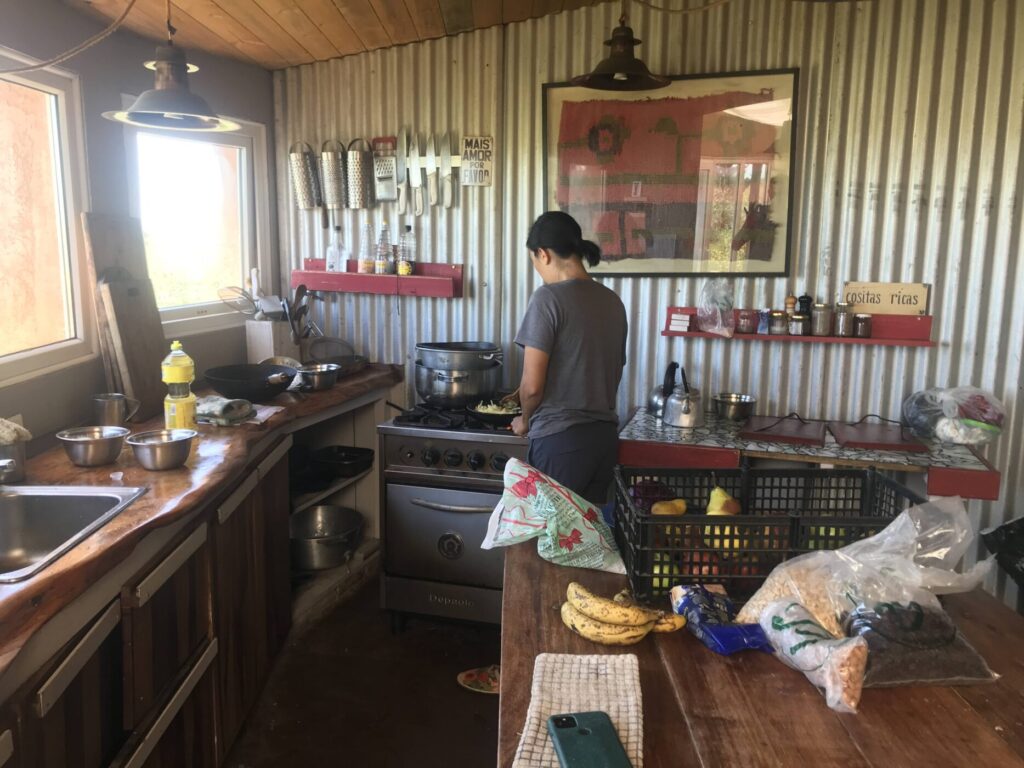
In the bathroom were two cans, one marked solo papel (only paper) and the other plasticos. In the kitchen, two holes in the counter led to plastic bins whose contents went directly to chicken coop.
We were to put our veggie and other kitchen scraps in there, even–gasp!–egg bits. (The farm does not consume meat at this point, though they have a restorative grazing operation that may eventually produce beef).
There was a plastic bag in the corner of the kitchen for plastic waste, which Pablo took regularly to someone they knew that turned it into usable products. (Nice knowing that your recyclables are actually going to be recycled and not just put in the landfill or shipped to another country where they may or may not be used).
In another corner was a cardboard box where we put paper waste. Pablo also said we could put our paper in a basket by the fireplace where it could be used as kindling in the winter months.
Where does it all go?
At Quinta, they are striving toward a zero-waste system, where everything that we humans don’t have further use for can either be reused or transformed by nature into something else, feeding back into the health of the ecosystem as a whole.
The paper products went directly into their dry toilets, where they, along with solid feces, become fertile dirt after about six months.
The organic materials went to the chickens, who apparently eat almost everything and eagerly flocked over to us each time we made a new kitchen scrap delivery. We, in turn, benefitted from a constant protein source–huevos!
Excess materials, citrus peels, and eggshells went to other composting bins.
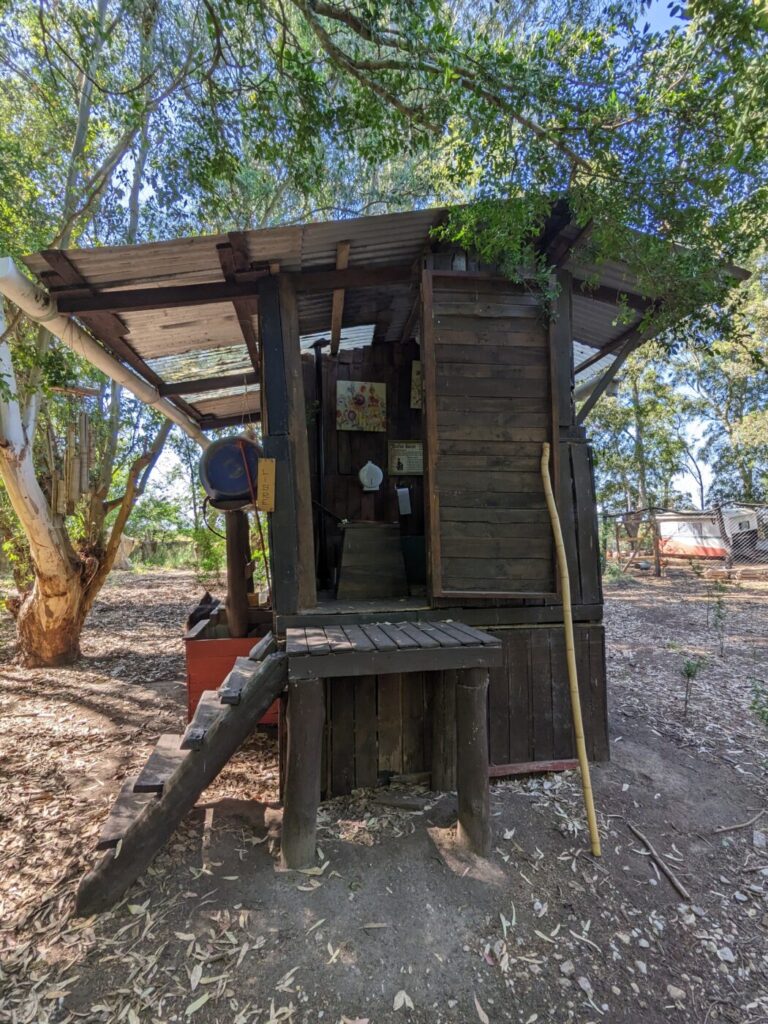
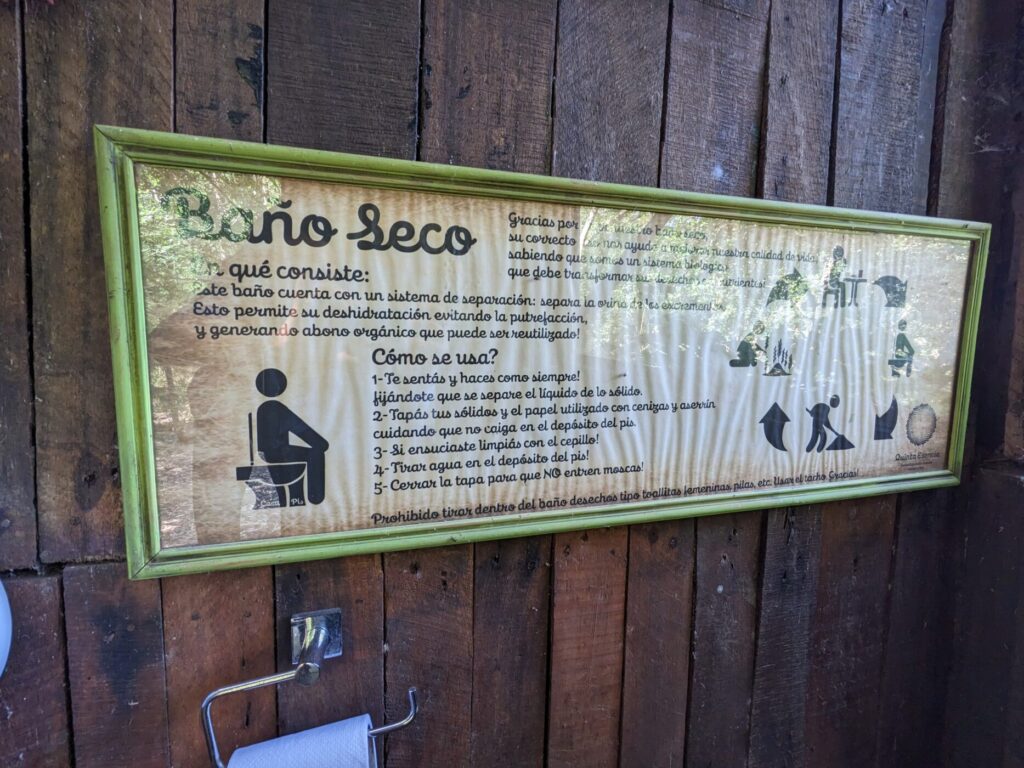
Room for Improvement
But without a trash can, or a clearly-communicated system, it wasn’t always clear to us short-term visitors what to do with things that didn’t fall in one of those categories. What to do with a used band-aid? A broken-off zipper? The gold wrap that covers the top of an olive oil bottle? Is it foil? Plastic? Something else?
There could have been some better explanation for the system of waste-redistribution. Maybe just a bin to put all the “I don’t know” items and a group meeting once in a while to go through and categorize our waste, and brainstorm where things should go.
“As well as reduce, reuse, and recycle, we can repair, refuse, re-educate, re-gift, replenish, and rethink,” writes Looby Macnamara in People and Permaculture. Moving toward zero-waste living will require lots of rethinking, for sure, of how we design products and packaging, what we purchase, and what we do with things we don’t need anymore.
There Is No ‘Away’
For me, living in a house without a trash can was a challenging exercise. It forced me to think about each item that I would have thrown thoughtlessly into the trash can. Does it go to the chickens? The dry toilet? The plastic recycling man? Or somewhere else? Knowing that almost all my waste products would feed directly into the soil or chickens, which in turn produce the food we eat, made me think twice about any chemicals that might be on the paper, or any pesticides on the fruit and veggie peels.
Even though it’s on a much larger scale and we usually don’t see it, this is feedback process is exactly what happens to all of our waste. It may go to an unknown landfill that we don’t think twice about. But that landfill eventually seeps liquid into the ground, into the water supply, and into the soil that is the basis of our farms.
It may go into the ocean, where it breaks down and enters the bodies of fish and squid and mussels, which we catch and eat in our seafood pasta. “We think we throw things ‘away,’ but we fail to realize there is no away,” writes Stephen Bouma-Prediger in For the Beauty of the Earth.
We Are What We Discard
Every forlorn place that we think is separate from ourselves — the junkyards, the landfills, the faraway oceans — is someone else’s backyard, some creature’s home. Though we think of places as being divided by distance and borders, on earth everything circulates — the ocean currents, the weather systems, the molecules of dirt that were once stardust that become plants that become part of our own bodies.
Just as everything returns to the earth, so do we. If everything we put into the land comes back around to us, then we want to only put good things into the land.
The people at Quinta Esencia like to say, somos tierra. We are earth. If that is so, then we must treat the earth well. We must figure out new ways to handle our “trash.”
